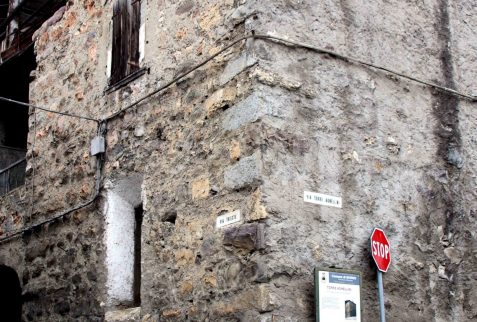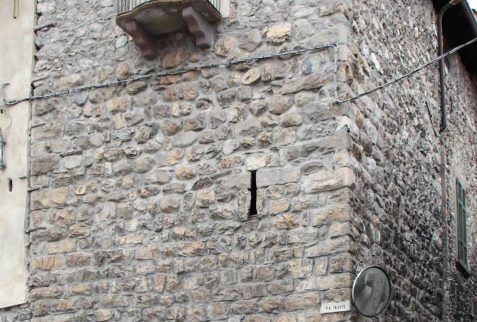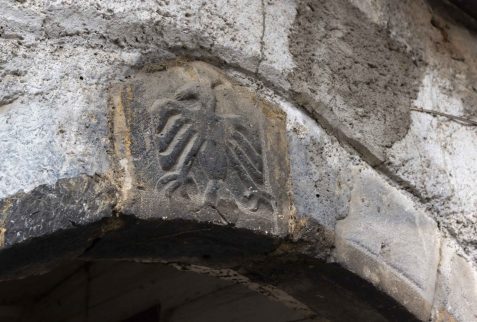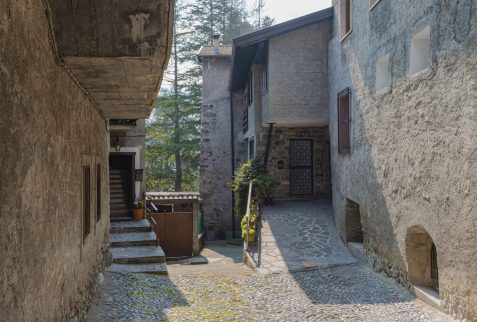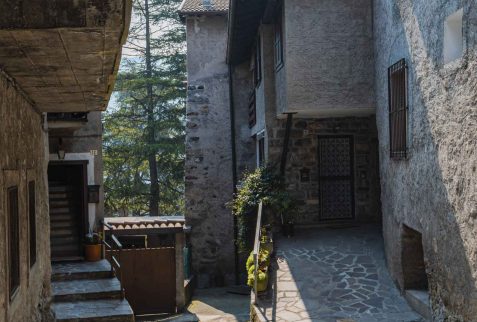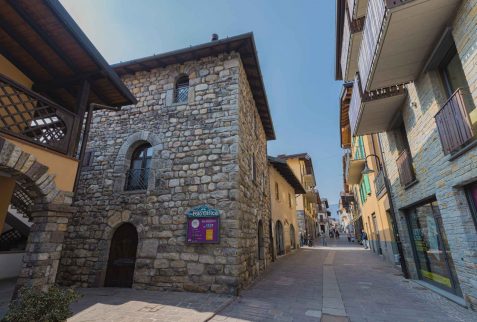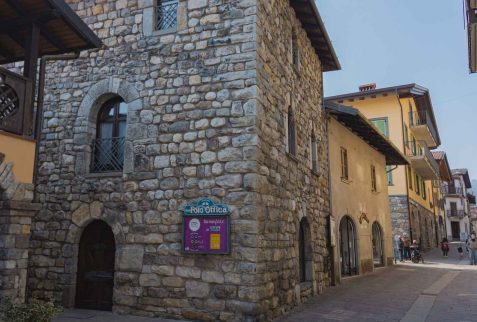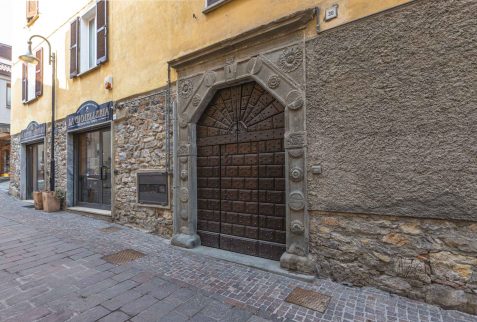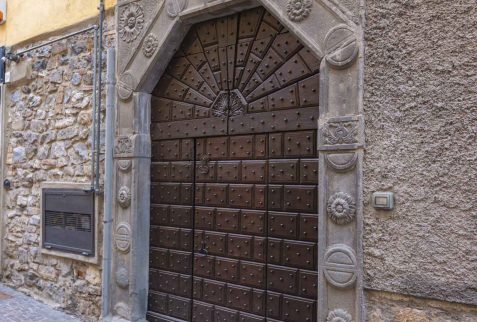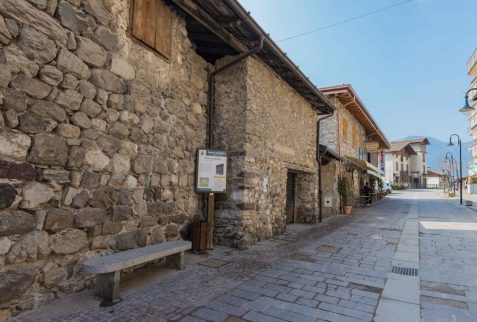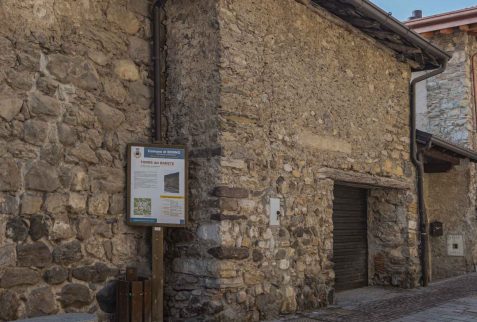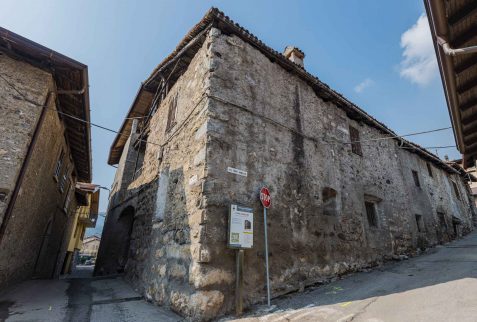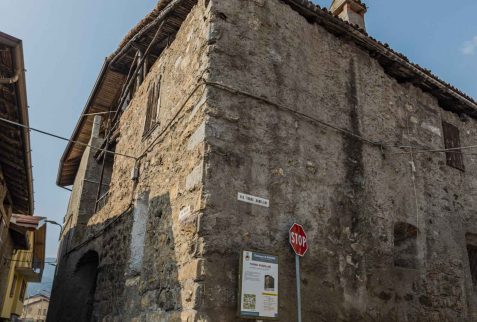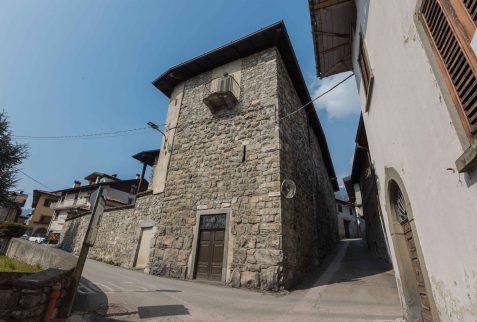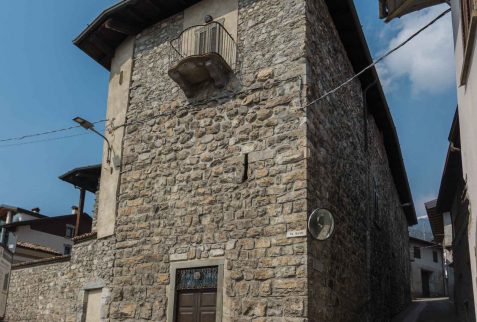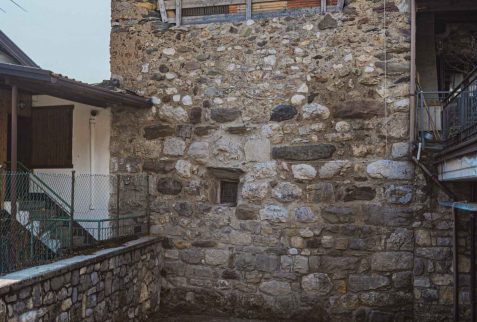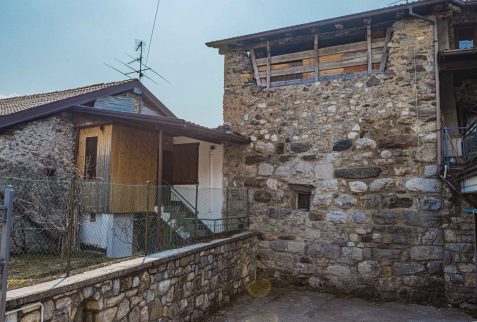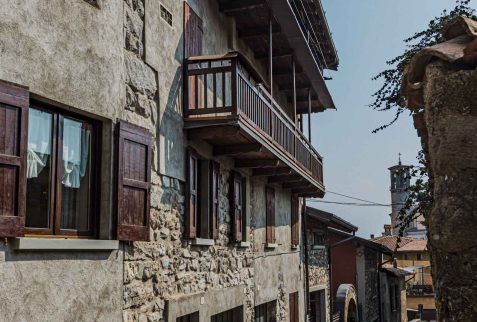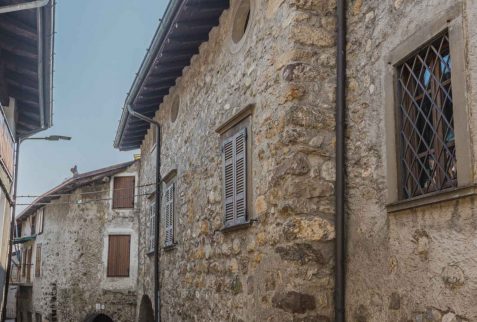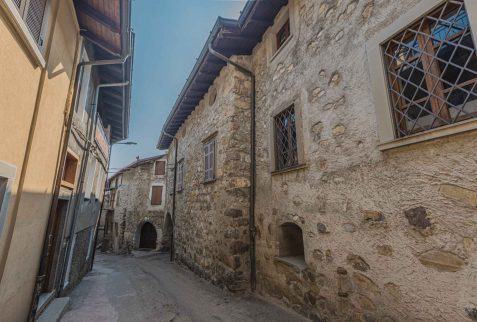The towers of Borno: the Barète tower and the Federici Tower
per person
Castles, towers and fortresses: the charm of medieval constructions – or at least what remains of them – still shines through on the Altopiano del Sole. Let’s discover together some of the towers of Borno, obligatory stops on a tour to discover the old town.
BORNO: THE “SAN GIMIGNANO” OF THE VALLE CAMONICA
It is hard to imagine the layout of the villages, especially in the mountains, in the centuries of transition from the disintegration of the Roman Empire to the late Middle Ages.
During the 13th century, the whole valley saw the erection of towers, castles and fortresses. Borno was at that time the San Gimignano of the Valle Camonica: there were no fewer than fifteen towers, and if there are clear traces of about ten, of the others we find only very limited remains. For a taste of the Late Middle Ages, all you have to do is to walk through the narrow streets of the ancient village observing carefully.
THE BARÈTE TOWER
THE BARÈTE TOWER The tower was built in the 13th century and owes its name to the nickname of the family that still inhabits it, although it has no connection with its distant history. In the Lombardy-Veneto period, in the mid-19th century, the building was owned by the Miorini family.
We do not know how high it was, but it is the only one among the towers of Borno which includes a basement: one basement is in fact located immediately below the tower and is as large as the tower itself, while the other, larger basement is located at its side, towards the Rigali bakery.
The owners say that, before the basement was restored, rings were embedded in the walls. This might suggest that they were prisons: unfortunately the rings have been removed. The passage from one cellar to the other allows one to measure the thickness of the walls: 1.60 m! The plan of the tower is square, with 7-metre sides.
BETWEEN LEGEND AND REALITY
According to urban legends of Borno, many aristocratic buildings were equipped with underground tunnels communicating with the Caidone or S. Fiorino valleys, for possible escape in the event of a siege. These were probably abandoned after the great fire of Borno, during which 150 to 200 houses were burnt down.
Borno is built on rock and it would not have been so easy to dig tunnels of such lengths. Explorations made in the caves in the S. Fiorino valley rule out any continuation. In some parts of the ancient village, it is possible to detect a considerable rise in levels, especially in the road, but not only: this could suggest buried rooms.
The ancient village ends with this tower. Considering that the danger to the village came from the Valle di Scalve, with which it had been fighting for centuries, it is possible to imagine that there was another tower on the other side of the road, in order to close off the inhabited area, although research has not yielded any results.
THE FEDERICI TOWER
The tower is now called ‘dei pagà’ (of the pagans), but this indication is not well documented and is somewhat misleading. In the 1855 Lombardy-Veneto cadastre, it still appears to be owned by a branch of the Federici family, in particular by Carlo fu Giovanni. It would therefore be opportune to catalogue it is part of the Federici properties, since that family was the only one of great and recognised nobility in the entire Valle Camonica.
Dated as being of the 13th century, it must have stood out among the other towers of Borno. It currently stands five storeys high: two are below the level of today’s Via Vittorio Veneto and are included in the cellars of surrounding shops.
Before buildings were constructed around it, especially towards the east, it must have appeared isolated and immediately visible when descending to the piazza. The road that still leads from the square to the cemetery was called the municipal road of the “Molo”: “molo” means large building and it could only be this tower.
We cannot know exactly how high it was in the centuries of its splendour because with the arrival of Venetian rule, all the defensive structures were destroyed and fell into disuse as a defensive tool.
RENOVATION WORK
The structure was extensively renovated during the last century: it was stripped of its external wall covering to regulate windows, doors and shop windows. This was possible due to the type of construction found in all the towers in the village. The walls of the towers consist of three juxtaposed layers: outer wall, inner wall and a cavity between the two, filled with stones and mortar. In some cases, once the defensive function had ceased, the tower was used as a dwelling, emptying the interior and leaving only the outer wall. In this case, however, the outer cladding was altered.
Re-clad, two firms succeeded each other during the work, which left an indelible mark in the different wall texture of the top floor.
Probably the entire neighbourhood where the tower is located originally belonged to the Federici family, but when the family declined, the buildings on the tower’s wing were sold. Part of those on the left were bought by a wealthy family, apparently of Austrian origin, who settled in Pian di Borno: the Glazels. The buildings on the right were perhaps acquired by the other wealthy Borno family, the Camozzi, whose coat of arms is perhaps present on a portal in Via Imavilla.
15TH-CENTURY PORTALS
In the buildings to the side of the tower, there are four 15th-century portals (two on each side) with full-centre arches: an unmistakable sign that the masonry buildings surrounding the tower were made or rebuilt in that century.
The fine limestone portal on the left of the tower, set far back from the street, originally protruded and was the entrance to the whole central building, as well as to a lot on the left. Dated MDCCLXXXV (1785), the portal only retains the final figures today, as some of the first ones have fallen off.



